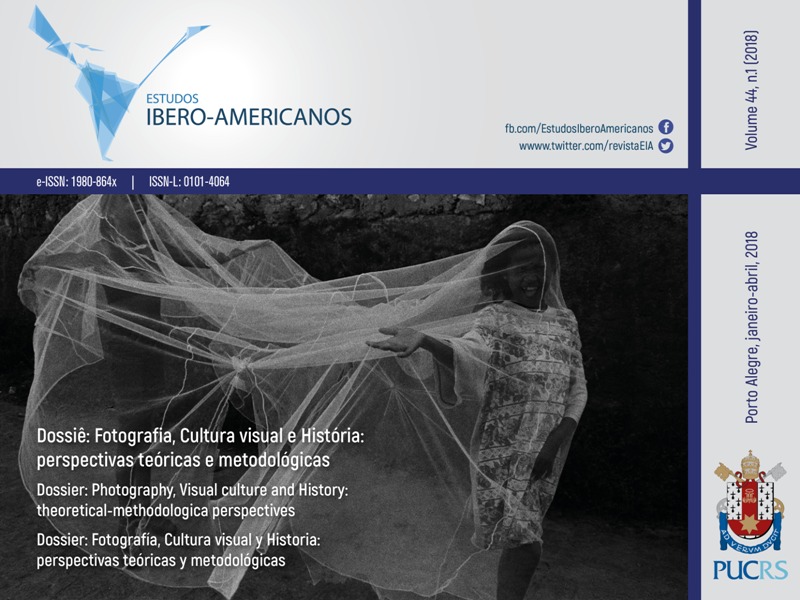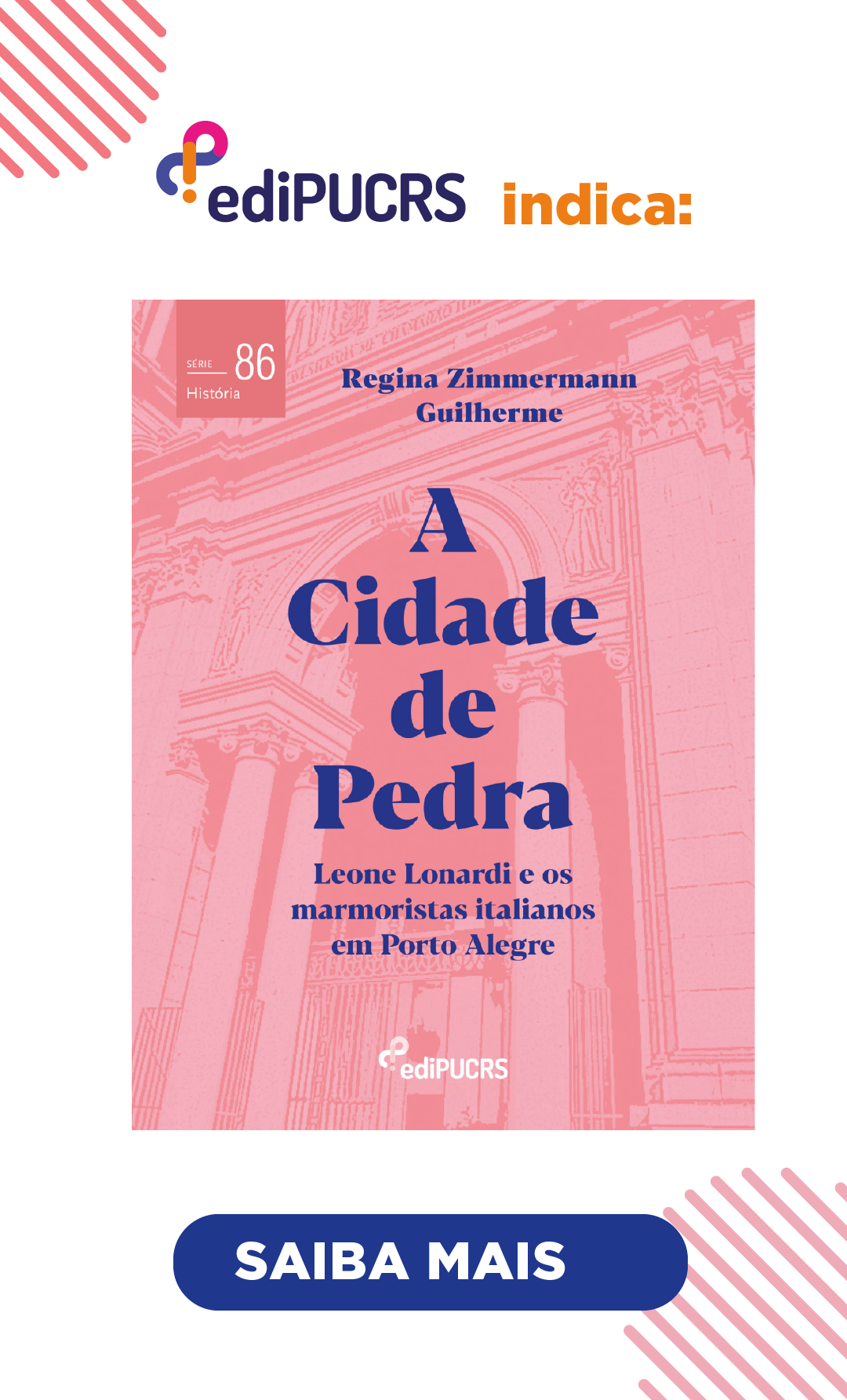Analyzing Historical Photographs: Genres, Functions, and Methodologies
DOI:
https://doi.org/10.15448/1980-864X.2018.1.27785Palavras-chave:
fotografias históricas, fotojornalismo, gênerosResumo
***Análise de fotografias históricas: gêneros, funções e metodologias***
O artigo opera com os conceitos de genero e função como contribuição no desenvolvimento de metodologias para analisar fotografias desde uma perspectiva histórica. Examina-se o gênero fotojornalismo considerando-se suas diferentes funções delimitadas por suas diversas dimensões, entre as quais: fotografia de imprensa, fotojornalismo propriamente, fotoensaios e documentarismo. Observa-se que os enganos gerados pelos praticantes desse gênero fotográfico são resultado da aplicação das regras de uma única função a todo o gênero. Assume-se a hipótese que a análise histórica pode facilitar o estabelecimento dos gêneros fotográficos e a distinção das diferentes funções dentro de um gênero.
Downloads
Referências
ANTONIORROBLES. En la ruta de Paco Mayo. Ma-ana, Mexico City, n. 449, p. 40-44, Apr. 1952.
AZOULAY, Ariella. Civil Imagination: A Political Ontology of Photography. Trans. Louise Bethlehem. London: Verso, 2012.
BARTHES, Roland. Camera Lucida. Trans. Richard Howard. New York: Hill and Wang, 1981.
BATESON, Gregory. Steps to an Ecology of Mind. New York: Ballantine Books, 1972.
BENJAMIN, Walter. The Work of Art in the Age of Mechanical Reproduction. In: LANG, Berel; WILLIAMS, Forrest (Ed.). Marxism and Art: Writings in Aesthetics and Criticism. New York: David McKay, 1972. p. 281-300.
BERGER, John. Understanding a Photograph. Edited by Geoff Dyer. London: Penguin Books, 2013.
BOURDIEU, Pierre. Photography: A Middle-brow Art. Trans. Shaun Whiteside. Cambridge: Polity Press 1990. Costa LIMA, Luiz. The Dark Side of Reason: Fictionality and Power. Trans. Paulo HenriquesBritto. Palo Alto: Stanford University Press, 1992.
CURTIS, James. Mind's Eye, Mind's Truth: FSA Photography Reconsidered. Philadelphia: Temple University Press, 1989.
DE LA PEÑA, Ireri (Ed.). Ética, Poética y Prosaica. Ensayos sobre fotografía documental. Mexico City: Siglo XXI, 2008.
DERRIDA, Jacques. The Law of Genre. Glyph: Johns Hopkins Textual Studies, Baltimore, n. 7, p. 202-232, 1980. Escorza RODRÍGUEZ, Daniel. Agustín Víctor Casasola. El fotógrafo y su agencia. Mexico City: INAH, 2014.
FULTON, Marianne. Eyes of Time: Photojournalism in America. Boston: Little, Brown, and Co., 1988.
GALEANO, Eduardo. Memoria del fuego. Three volumes. Mexico City: Siglo XIX, 1982-1986.
HIRSCH Jr., E. D. Validity in Interpretation. New Haven: Yale University Press, 1967.
HORTON, Brian. The Associated Press. Photojournalism Stylebook. The News Photographer's Bible. New York: Addison- Wesley, 1990.
KOZOL, Wendy. Life's America: Family and Nation in Postwar Photojournalism. Philadelphia: Temple University Press, 1994.
LÓPEZ, Nacho. Letter to Manuel Berman, 1 August 1980, Archivo Documental Familia López Binnqüist (ADFLB).
______. Yo, el ciudadano. Mexico City: Fondo de Cultura Económica, 1984.
______. 'Yo también he sido ni-o bueno…', un reportaje de Nacho López. Ma-ana, Mexico City, n. 383, p. 20-26, Dec. 1950.
______. Winfield Scott: Retrato de un fotógrafo norteamericano en el porfiriato. Mexico City: Universidad Autónoma Metropolitana, 2012.
Marzal FELICI, Javier. Cómo se lee una fotografía. Interpretaciones de la mirada. Madrid: Cátedra, 2015.
MOYA, Rodrigo. Unpublished manuscript. Las imágenes prohibidas. ENCROME 4, “Proyecto ENsayo-CRÓnica-MEmoria”, Archive of Rodrigo Moya.
MRAZ, John. “En calidad de esclavas”: obreras en los molinos de nixtamal, México, diciembre, 1919. Historia Obrera, Mexico City, v. 6, n. 24, p. 2-14, Mar. 1982.
______. Los Hermanos Mayo: el Primero de Mayo y la fotografía de la clase obrera. Boletín de investigación del movimiento obrero, Puebla, n. 11, p. 105-115, Mar. 1988.
______. Tina Modotti: en el camino hacia la realidad. La Jornada Semanal, Mexico City, n. 7, p. 20-23, July 1989.
______. Cuban Photography: Context and Meaning. History of Photography, London, v. 18, n. 1, p. 87-96, Spring 1994. <https://doi.org/10.1080/03087298.1994.10442333>
______. Mexico: The New Photojournalism. History of Photography, London, v. 22, n. 4, p. 313-365, Winter 1998.
______. Sebastião Salgado: Ways of Seeing Latin America. Third Text, v. 16, n. 1, March 2002, 15-30. <https://doi.org/ 10.1080/09528820110120687>
______.What's Documentary about Photography? From Directed to Digital Photojournalism. In: Zonezero Magazine, 2002. Available at: . Accessed on: 29 May 2017.
______. Nacho López: Mexican Photographer. Minneapolis: University of Minnesota Press, 2003.
______. From Robert Capa's “Dying Republican Soldier” to Political Scandal in Contemporary Mexico: Reflections on Digitalization and Credibility. In: Zonezero Magazine, 2004. Available at: . Accessed on: 29 May 2017.
______. Looking for Mexico: Modern Visual Culture and National Identity. Durham: Duke University Press, 2009.
______. Photographing the Mexican Revolution: Commitments, Icons, Testimonies. Austin: University of Texas Press, 2012.
MRAZ, John; VÉLEZ STOREY, Jaime. Uprooted: Braceros in the Hermanos Mayo Lens. Houston: Arte Público Press, 1996.
MRAZ, John et al. Walter Reuter. El viento limpia el alma. Barcelona, Lunwerg, 2009.
Nacho López, fotorreportero de los a-os cincuenta. Mexico City: CONACULTA, 1989.
PICAUDÉ, Valérie; ARBAÏZAR, Phillippe (Eds.). La confusión de los géneros en fotografía. Barcelona: Gustavo Gili, 2004. “Polémica y debate abierto,” Sexta Bienal del Fotoperiodismo, Mexico City, 2004. Available at: <http://www.fotoperiodismo.org>. Accessed on: 29 May 2017.
RODRÍGUEZ, José Antonio; TOVALÍN AHUMADA, Alberto (Eds). Nacho López, ideas y visualidad. Mexico City-Veracruz: INAH-Fondo de Cultura Económica-Universidad Veracruzana, 2012.
______. Nacho López. Fotógrafo de México. Mexico City: Museo del Palacio de Bellas Artes, 2016.
ROSLER, Martha. In, around, and afterthoughts (on documentary photography). In: BOLTON, Richard (Ed.). The Contest of Meaning: Critical Histories of Photography. Cambridge, MIT Press, 1989. p. 303-341.
SAUNDERS, Dave. 20th Century Advertising. London: Carlton, 1999.
SCHULTZ, Reinhard (Ed.). Tina Modotti: Photographien & Dokumente. Berlin: Sozialarchiv, nd [1989].
SEKULA, Alan. Dismantling Modernism, Reinventing Documentary. The Massachusetts Review, Amherst, v. 19, n. 4, p. 859-883, 1978.
SOLOMON-GODEAU, Abigail. Who is Speaking Thus? Some Questions About Documentary Photography. In: FALK, Lorne and FISCHER, Barbara Fischer (Eds.). The Event Horizon. Toronto, Coach House Press, 1987. p. 193-214.
SONTAG, Susan. On Photography. New York: 1973.
STEIN, Sally. Making Connections with the Camera: Photography and Social Mobility in the Career of Jacob Riis. Afterimage, Rochester, v. 10, n. 10, p. 9-16, May 1983.
STOTT, William. Documentary Expression and Thirties America. London: Oxford University Press, 1986.
TODOROV, Tzvetan. The Origen of Genres. New Literary History, Baltimore, n. 8, v. 1, p. 159-170, 1976.
______. The Typology of Detective Fiction. In: The Poetics of Prose. Ithaca: Cornell University Press, 1977. p. 42-52.
VILCHES, Lorenzo. Teoría de la imagen periodística. Barcelona: Ediciones Paidós, 1987.
WILLUMSON, Glenn W. W. Eugene Smith and the Photographic Essay. Cambridge: Cambridge University Press, 1992.
Downloads
Publicado
Como Citar
Edição
Seção
Licença
Copyright (c) 2018 John Mraz

Este trabalho está licenciado sob uma licença Creative Commons Attribution 4.0 International License.






